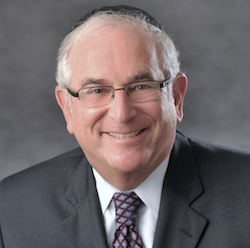
As Gurwin Jewish Nursing & Rehabilitation Center celebrates its 29th anniversary, it soon will add Fountaingate Gardens independent living to its current offerings in assisted living, memory care, adult day care, short-term rehabilitation, skilled nursing and home care. Founder, Executive Vice President and CEO Herbert H. Friedman recently discussed the evolving senior living field with McKnight’s Senior Living Senior Editor Lois A. Bowers.
Q: What are the biggest ways in which senior living has changed in the decades that Gurwin has operated?
A: In a nutshell, the nursing home of yesteryear is assisted living today. Assisted living represents a higher level of care.
In the olden days, when your activities of daily living were compromised, you went to a nursing home. Today, when your ADLs are compromised, you go to assisted living. A nursing home is for when you’re much sicker; you need intense rehab; or you need nursing care on a much higher level.
As far as Gurwin specifically, 29 years ago, Gurwin was nonexistent. We’ve grown to literally a system. We have five corporate entities today.
Today, there’s a focus on aging in place and home care. We do a lot of subacute care to get people home quickly after a hospital stay.
Our physical therapists, occupational therapists and speech therapists come in early, work late, and work on Saturdays and Sundays to evaluate and treat people discharged from the hospital. It’s also in Gurwin’s best interest for hospitals that discharge to us Medicare patients who are part of bundled payment programs. We also have on-site dialysis now, so people who come for short-term rehab don’t have to skip it.
In the olden days, they were sent out. Dialysis lasted three to four hours, with an hour of travel time before and after, so if you had to go out of the building, you were not getting rehab that day. But here, we can give you rehab in the morning, and we just wheel you right down the corridor to our 12-station dialysis unit. We have about 30 people, between the nursing home and our assisted living, who get dialysis three times a week. They can get it at whatever time they want it. It’s open for four shifts, from 6 a.m. until late in the evening.
Q: When Gurwin first started, was the thought that ultimately there would be these various elements of a continuing care retirement community? Or did it grow more or less organically?
A: It depends who you ask. When I look at my groundbreaking speech, in which I forecast what I envisioned, 90% to 95% came true. I remember board members saying — I overheard them, and they didn’t know that I was right behind them — “It’s good to hear a young guy dream.”
Gurwin Jewish was created in the early 1980s. Our 300-bed nursing home opened in 1988, followed the next year by an adult day program. We added a home care program in 1997, a 160-bed unit in 1999 that included a 28-bed ventilator dependent unit, and the 160-apartment Fay J. Lindner Residences assisted living community in 2001. We began offering on-site dialysis in 2008 and opened a 60-bed memory care unit in 2016.
If we were starting today, we would begin with independent living. But I started in 1986 and our first admission was in 1988, and in those days you began with the nursing home.
If you look at the typical CCRC today, about three-quarters is independent housing, then assisted living, and then the smallest component is skilled nursing.
If well elderly individuals go into independent housing, they want to age in place. If they need help, the first thing they would get is home care. If they need more help, then they would go to assisted living. And if they need additional help, the skilled nursing facility.
Today the focus is on independent living, and that’s exactly what we’re now doing at Gurwin. We’re building Fountaingate Gardens. We’ll offer a complete continuum of care when it opens.
Phase one is 176 units, and then phase two will bring it up to about 230 apartments.
CCRCs are gaining in New York, which had very strict regulations. New York now has 12 CCRCs — Gurwin will be the 13th — compared with New Jersey, which has 27; Massachusetts, which has 32; and Pennsylvania, which has 271. On Long Island, there are three CCRCs right now. Gurwin will be the fourth.
Our three current entities — nursing home, assisted living and independent living — will total almost 35 acres. Fountaingate is not operational, but the operational budgets of the other two combined are $115 million. Collectively, we employ 1,300 individuals.
Q: If you had a crystal ball, what would you say the future will bring?
A: The future of long-term care is in the CCRC. I would like to see Gurwin of the South Shore, Gurwin of the Hamptons, Gurwin of the Five Towns. That’s really dreaming, but there still is incredible need.
From the December 01, 2017 Issue of McKnight's Senior Living



